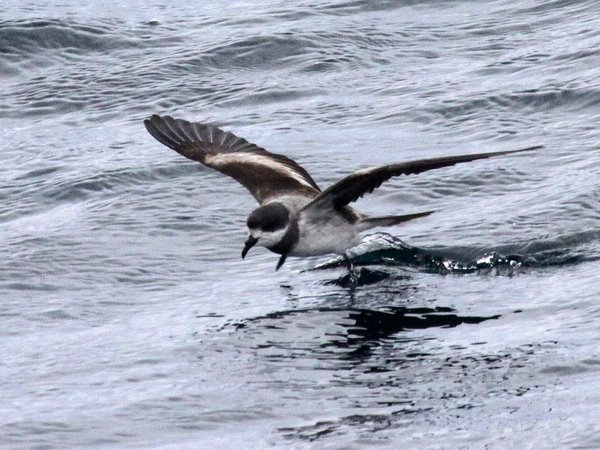20 best birds of Lima pelagics, part 1
Pelagic birdwatching in Peru
I have arranged pelagics in Lima since 2000. We usually run around 10-12 pelagics per year. Since an accident last year, the port regulations in Lima for commercial activities at sea have become stricter. Even boats with permits to take tourists around, don’t have permit to go further than 16 nmiles (or 10 nmiles from San Lorenzo island), because of lack of specific security equipment for deep sea operations. Since, birding at sea is such a small activity per se, the boat owners we have used in the past are not very interested in investing.
Nevertheless, during the cold water season (June-August),we have had great success thus far this year with several of the best species seen with the limited range, but in the long run the only viable option for us is to get our own boat. During the summer months it will be essential to go out further at sea for the good birds. Having our boat would ensure flexibility as well as always collecting data for research.
Naturally, twelve trips per year will not be enough to make it economically feasable, so we shall compliment with whalewatching, which is very good in Lima, especially for little known species and forms (see this recent whale-watching blogpost). Nevertheless, we shall be needing some sort of guarantee that there would be enough participants. And this is where you come in.
How? You could become our sponsor with a payback that vastly exceeds your modest investment. A special offer which make you eligible to watch seabirds at sea for FREE in Peru for the rest of your life plus many other bonus features.
Hadoram Shirihai, Steve Howell and Peter Harrison make their testimonials below about the importance of continued pelagics from Lima.
Interested? Scroll on. If not, just scroll down a little bit only to see pictures of the 10 best birds of Lima pelagics. The next 10 will be presented in a future blogpost. Which species are you missing? Have you done a pelagic with us? Which species were your favorites? Do you have pictures to publish here on the blog or on the Kolibri Facebook Page?
The 20 best birds of Lima Pelagics – top 10.
1.Ringed Storm-Petrel Oceanodroma hornbyi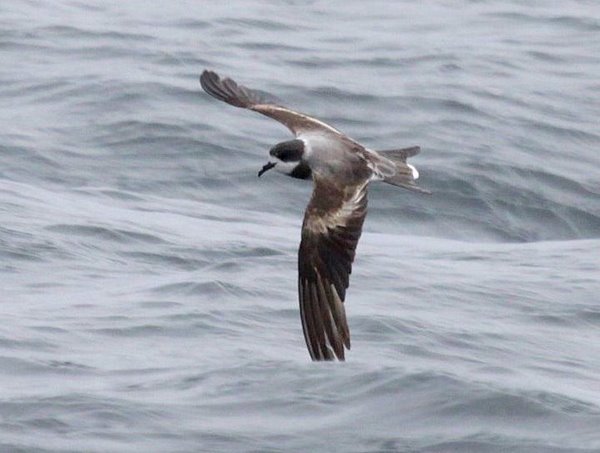
The Ringed Storm-Petrel or Hornby’s Storm-Petrel as it is also known is perhaps the most wanted of all the seabirds in Lima. It is very difficult to see in coastal waters, although we have struck lucky sometimes on shorter trips. One usually needs to go all the way to the continental shelf some 30 nmiles out. It is a large powerful Storm-Petrel which gets interested in the chum, but usually just makes a few turns and keeps a distance.
No breeding area of the Ringed Storm-Petrel is known. It may well nest inland. Individuals have been found at 3800 meters in the Cordillera Blanca in Ancash department.
2 Markham’s Storm-Petrel Oceanodroma markhami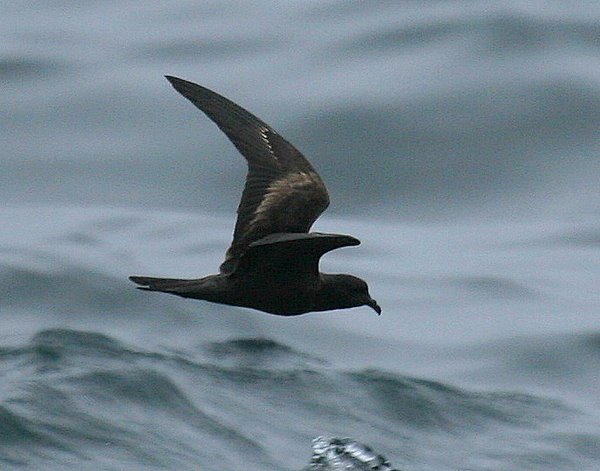
Markham’s Storm-Petrel is the other Stormy high on the birders wishlist. It is also a powerful Oceanodroma. Blackish brown in color with a broad and usually quite prominent carpal bar. It often comes to the chum, but seldom as close as for instance White-vented Storm-Petrel below.
It is also usually found in deep water quite a ways out. Having said that we were lucky two see one recently on July 13 on a mini-pelagic to only 15 nmiles.
3. Peruvian Diving Petrel Pelicanoides garnotii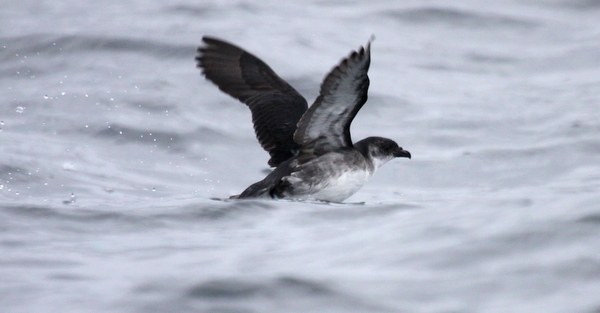
The Peruvian Diving-Petrel is numerous off San Lorenzo island (the large island you see in front of La Punta, Callao). It is a strange bird looking very much like a little auklet both in appearance, flight and behaviour. It takes off on the water with very rapid wingbeats – or makes a dive to get away from the boat.
4. Waved Albatross Phoebastria irrorata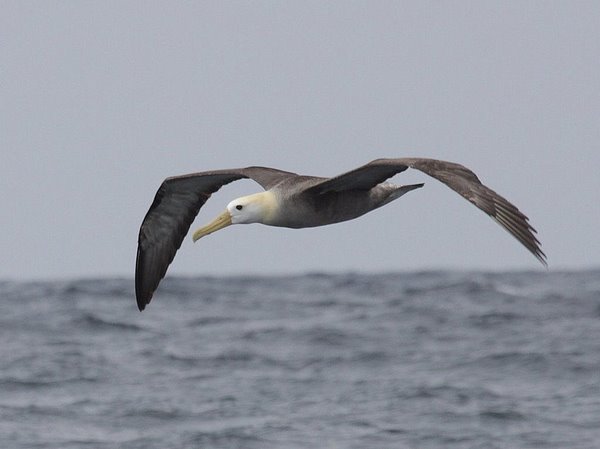
Although, as you probably know, Waved Albatross principally breeds on Galapagos, you can almost always find this magnifiscent looking albatross in Peruvian Waters. Adults often take sabattical years from breeding and young may stay around the rich peruvian waters longer. We often see them also on our recent short pelagics.
The Waved Albatross is Critically endangered according to Birdlife International. Main threats seem to be bycatch in fishing procedures and direct hunting by fishermen at sea. According to one captain on a fishing boat in Northern Peru they “taste good“.
5. Inca Tern Larosterna inca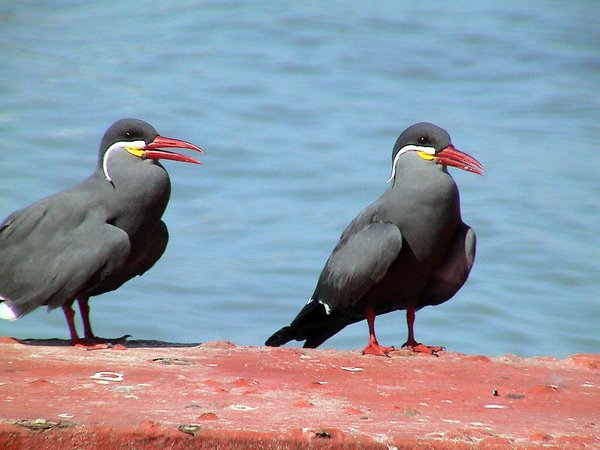
The prettiest tern of the world no doubt, the Inca Tern is easy to see well and one can see them even at the port at close range. It is by no means uncommon, but since it is such a popular and photogenic bird, it just has to be among the top 10 – don’t you agree?
6. Swallow-tailed Gull Creagrus furcatus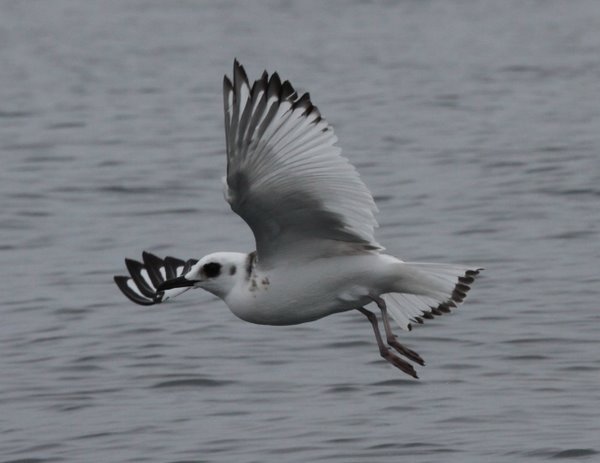
Another visitor from the Galapagos that can be seen almost all year around in small numbers. The pattern is like a giant Sabine’s Gull. The immature and the adult in non-breeding adult have a black goggle around the eye that gives it away. The Swallow-tailed Gull is active at night feeding on crusteceans, why we often find groups of birds sitting on the sea.
7. Chatham Albatross Thalassarche eremita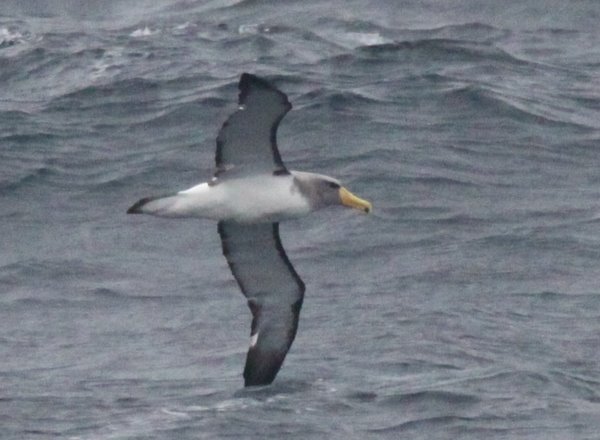
There are now five records from our Lima pelagics of the formerly Critically Endangered Chatham Alabtross. Recently it was downgraded to Vulnarable, but still with a small range only breeding on The Pyramid, a large rock stack in the Chatham Islands, New Zealand, it is a darn good bird to see in Peru. We have seen both adults and young birds. Best time of year to see one in Peru is between May and August. Sorry about the crappy photo. It is the only one I have got.
8. Northern Giant Petrel Macronected halli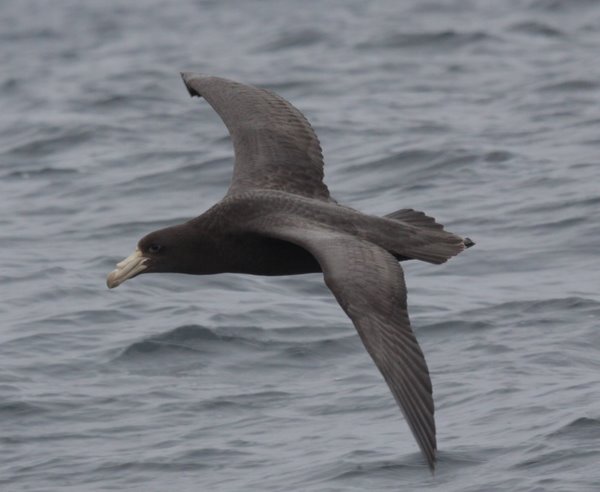
The Northern Giant Petrel was according to older literature hypothetical in Peru. It turns out it is actually as regular, or maybe even more regular than the Southern Giant Petrel. We see all dark immatures with pink-tipped bills yearly and often relatively near the coast. Our records from 2002-2007 are summerized in this paper in Marine Ornitology journal.
9. South Polar Skua Stercorarius maccormicki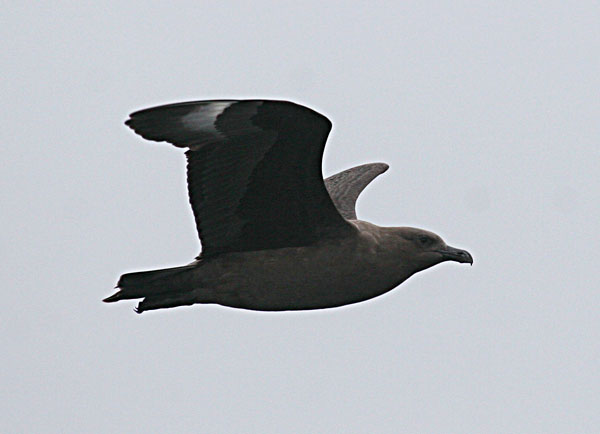
South Polar Skua is less common than Chilean Skua, although through the years we have seen it between April to November. It is slenderer, much darker and with a smaller bill, than Chilena Skua.
10. White-vented Storm-Petrel Oceanites gracilis
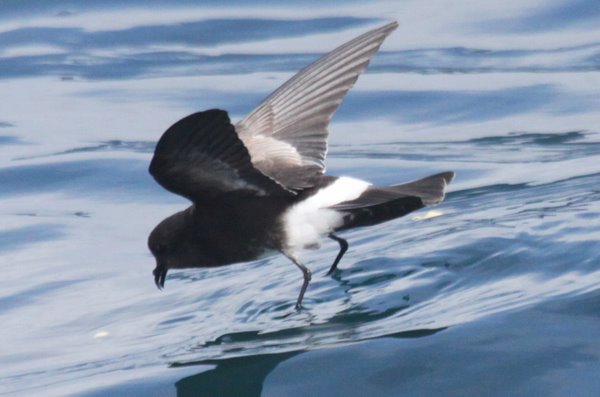 White-vented Storm-Petrel is the most common Storm-Petrel off the Peruvian coast, yet it is one of my favorites. They are very fragile – a small Storm-Petrel that trips on water. They are always the first tubenoses that come to the chum. Yet, they are not easy to seperate from Wilson’s Storm-Petrel – or the other way around as Wilson’s Storm-Petrel is much rarer. If the diagnostic white belly is not seen, the best feature is the light butterfly-like flight with rapids wingbeats. Wilson’s Storm-Petrel is steadier in flight.
White-vented Storm-Petrel is the most common Storm-Petrel off the Peruvian coast, yet it is one of my favorites. They are very fragile – a small Storm-Petrel that trips on water. They are always the first tubenoses that come to the chum. Yet, they are not easy to seperate from Wilson’s Storm-Petrel – or the other way around as Wilson’s Storm-Petrel is much rarer. If the diagnostic white belly is not seen, the best feature is the light butterfly-like flight with rapids wingbeats. Wilson’s Storm-Petrel is steadier in flight.
Special offer for pelagic lovers.
Now you know what is awaiting you when you come to Peru and do pelagics with us. And don’t just take my word for it.
The importance of Lima as a destination for seabirders is evident. See what other pelagic experts have to say.
Steve N. G. Howell, author and tour leader with various book such as Birds of Mexico, Gulls of the Americas and Petrels, Albatrosses, and Storm-Petrels of North America, in press with Princeton) argues:
Lima is one of the best areas for pelagic birding in the Americas, with access to several species that can’t be seen easily anywhere else. Keeping pelagic trips going here is important both for birders and for gathering data on the seasonal distribution and abundance of numerous species, some of which are globally threatened.
Hadoram Shirihai, photographer and author of various books such as Whales, Dolphins and other Marina Mammals of the World and The complete guide to Antartic Wildlife says:
Lima is a unique seabird pelagic hotspot for me. The pelagic off Lima with Kolibri Expeditions is one of the best that I tested for the work towards the Handbook of the Tubenoses of the World project, and I call to anyone to support Gunnar to continue the good work he has been doing for years.
Also Peter Harrison, pelagic Guru, who will be in Lima on August 9 for either a short pelagic or hopefully a full day pelagic with one of the ships of IMARPE – the Peruvian Sea Institute, which we hope to hire for the day, is supportive of our project:
The continuation of pelagic voyages from Lima is critically important to further our knowledge of seabird biology and distribution along this important avian flyway. I would also add that although I have not been with Gunnar in person, his reputation is well known and he has added much to our knowledge and provided great service for passing ornithologists and birdwatchers over the years. It is perhaps significant that when the author of Seabirds of the World: An Identification Guide
wanted a pelagic trip from Lima, Kolibri Expeditions and Gunnar Engblom was the outfitter he contacted.
As mentioned at the beginning of this post, you have the possibility to be able to go on our pelagic birding trips for the rest of your life for free. We are investing in our own boat. You can help us by becoming a member in:
Kolibri Expeditions VIP Club
Your contribution is:
500 US$
Seems like a lot of money? By taking a few trips with us in Peru and elsewhere in South America, as Kolibri VIP you will regain you investment through a series of benefits. You don’t loose, we don’t have to borrow money and a permanent resource for nature lovers is created and puts Peru on the pelagic map. Here are the benefits:
- One free space on a Lima pelagic once we have the boat that you can book on very short notice. You decide the date and we’ll run the pelagic – Value $175 to $1000 depending on the number of people taking part in the end.
- One free space on a Lima pelagic/whalewatching trip any day of the year, booked with minimum 9 months in advance. Value $175 to $1000 depending on the number of people taking part in the end.
- Perpetually free 1 day pelagic/whalewatching on standby basis – this also applies if we arrange pelagic away from Lima. Value $175 each time.
- Perpetually 10% discount on all our tours – discounting the airfares and train tickets. It will not only apply on Peru tours, but also on our international tours. On a two week tour this discount amounts to between $200-300
We mostly do birdwatching tours, but we are also arranging standard nature tours and cultural tours. Our activity is expanding also outside of Peru. - Perpetually free Lima day trips as long as there are 2 other paying clients. Value around $150 per trip.
Read more about the background to this offer on this previous blogpost. It also relates to our environmental, conservation and social commitment. The Special offer has been up for a while on my blog, but since this specific post directed to pelagic birders was published only today, the offer is extended to December 31, 2011.
Write me to sign up for the program or to ask questions how this can benefit you.
And don’t forget to let me know in the comments below which are your favorite seabirds off Lima? Do you coincide with me?
Top Photo: Waved Albatross. Photo: Gunnar Engblom

